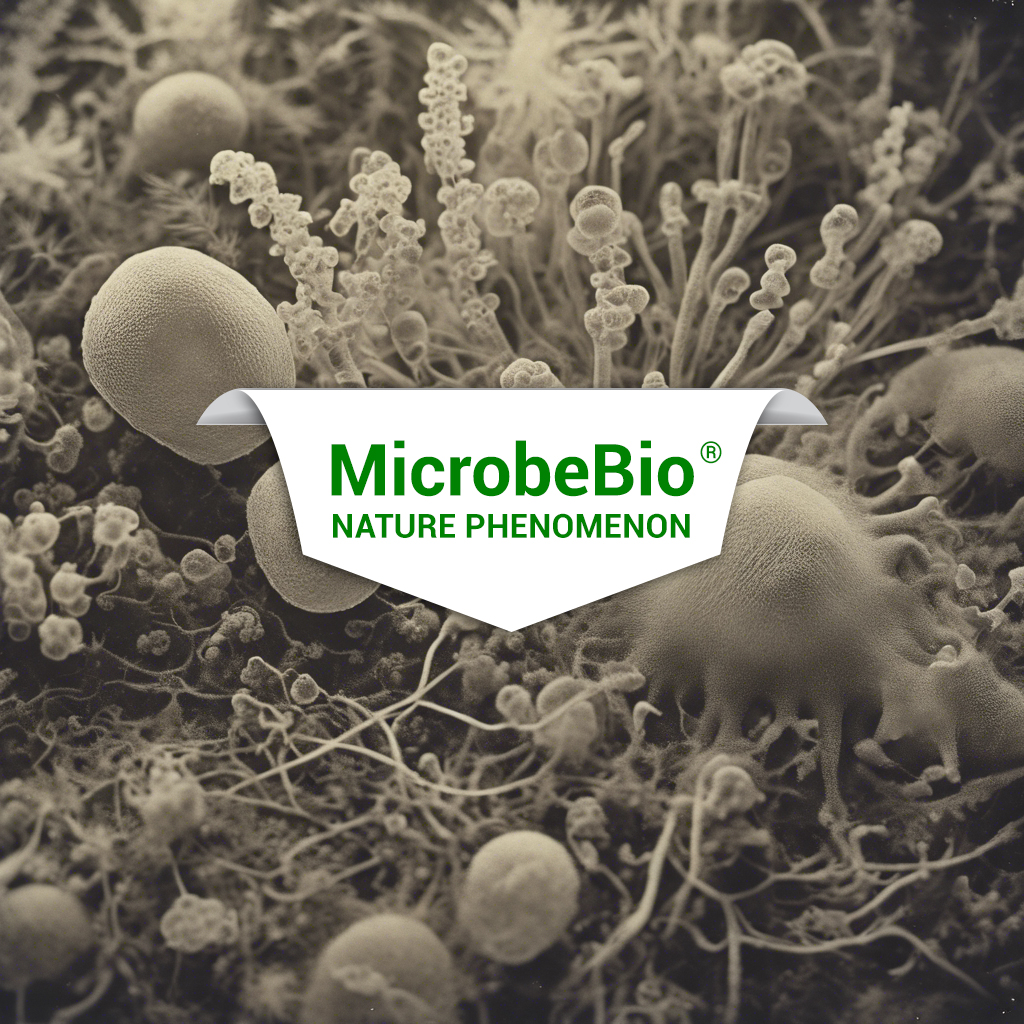Advanced Microbial Biotechnologies for the Remediation of Polluted Aquatic Ecosystems: A Case Study of River and Lake Restoration
 The health of aquatic ecosystems is a critical component of global biodiversity, human well-being, and the sustainability of natural resources. However, freshwater bodies such as lakes and rivers are increasingly compromised by anthropogenic activities, resulting in a range of ecological disturbances. Among these, nutrient overloading, organic matter deposition, heavy metal contamination, and pathogen introduction are particularly concerning. These issues contribute to the degradation of water quality, leading to phenomena such as eutrophication, loss of aquatic biodiversity, and threats to public health due to the contamination of drinking water sources.
The health of aquatic ecosystems is a critical component of global biodiversity, human well-being, and the sustainability of natural resources. However, freshwater bodies such as lakes and rivers are increasingly compromised by anthropogenic activities, resulting in a range of ecological disturbances. Among these, nutrient overloading, organic matter deposition, heavy metal contamination, and pathogen introduction are particularly concerning. These issues contribute to the degradation of water quality, leading to phenomena such as eutrophication, loss of aquatic biodiversity, and threats to public health due to the contamination of drinking water sources.
Microbial Mechanisms in Bioremediation
Microorganisms—particularly bacteria, fungi, and algae—are central to biogeochemical cycles in aquatic environments. Their roles include the decomposition of organic matter, nitrogen fixation, phosphorus solubilization, and the degradation of various pollutants. Microbebio’s proprietary formulations are engineered to optimize these natural processes in contaminated water bodies. The formulations consist of a consortium of bacteria, fungi, and algae selected based on their metabolic potential, resilience to environmental stressors, and synergistic interactions.
Bacterial Consortia
Bacteria are pivotal in the bioremediation process due to their ability to degrade a wide array of organic and inorganic pollutants. Microbebio’s formulations incorporate bacterial strains with specific metabolic capabilities for degrading hydrocarbons, pesticides, heavy metals, and other toxic substances frequently found in polluted aquatic environments. For example, strains of *Pseudomonas* and *Bacillus* are noted for their hydrocarbon degradation abilities, while *Desulfovibrio* species excel in sulfate reduction and acid mine drainage remediation.
Bacterial degradation of pollutants occurs via various metabolic pathways, including aerobic and anaerobic respiration, fermentation, and co-metabolism. Under aerobic conditions, bacteria utilize oxygen as a terminal electron acceptor, breaking down organic pollutants into carbon dioxide, water, and biomass. In anoxic environments, bacteria employ alternative electron acceptors such as nitrate, sulfate, or metals, enabling them to degrade pollutants in oxygen-depleted zones, which are commonly encountered in polluted lakes and rivers.


lake in the forest with reflection
Ecological Restoration
Over several months, microbial activity in the sediments led to the breakdown of organic pollutants, with a reduction of over 80% in their concentrations. Heavy metals were also biotransformed into less toxic forms, significantly decreasing their environmental impact. The sediment remediation not only improved the quality of the lake’s sediments but also contributed to the overall enhancement of the lake’s water quality and biodiversity. The revitalization of the lake’s benthic environment helped to reestablish a more balanced and healthy ecosystem, allowing for the natural recovery of native species and fostering a more resilient aquatic environment.
Advantages and Challenges of Microbial Bioremediation
While microbial bioremediation presents numerous advantages over traditional remediation techniques, including its sustainability, cost-effectiveness, and environmental compatibility, it also faces certain challenges that must be addressed to ensure successful application. Understanding both the strengths and limitations of this approach is crucial for the effective deployment of Microbebio’s proprietary microbial formulations in diverse aquatic environments.
Advantages
- Sustainability: Microbial bioremediation is an inherently sustainable process that relies on natural biological mechanisms, reducing the need for chemical interventions and minimizing the risk of secondary pollution. This approach aligns with the principles of environmental stewardship and offers a long-term solution for maintaining water quality in lakes and rivers.
- Cost-Effectiveness: Compared to conventional methods such as dredging, chemical treatments, or mechanical aeration, microbial bioremediation is relatively low-cost, especially when scaled for large water bodies. The use of microbial consortia reduces the need for repeated applications and ongoing maintenance, providing a cost-effective solution for water quality management.
- Long-Term Impact: By restoring the natural microbial communities and facilitating the reestablishment of ecological balance, microbial bioremediation offers long-term benefits that extend beyond the immediate cleanup of pollutants. The revitalization of aquatic ecosystems through microbial activity can lead to lasting improvements in water quality, biodiversity, and ecosystem resilience.
- Environmental Compatibility: The microorganisms used in Microbebio’s formulations are typically native or non-invasive species that are compatible with the existing ecosystem. This minimizes the risk of ecological disruption and ensures that the remediation process does not introduce new environmental challenges.
Challenges
- Environmental Variability: The effectiveness of microbial bioremediation can be influenced by environmental factors such as temperature, pH, salinity, and the presence of other contaminants. Ensuring that the introduced microbes can thrive and remain metabolically active under specific environmental conditions is critical for the success of the remediation process.
- Time Frame: Microbial bioremediation is a natural process that may require more time to achieve noticeable results compared to more aggressive methods such as chemical treatments or physical removal of pollutants. Patience and continuous monitoring are necessary to assess the progress of the remediation efforts and to make adjustments as needed.
- Regulatory Considerations: The introduction of microbial consortia into natural water bodies may be subject to regulatory oversight, depending on the region and the specific environmental laws in place. It is important to comply with local regulations, obtain necessary permits, and conduct thorough environmental assessments before applying microbial formulations in the field.
- Potential for Resistance: Similar to antibiotic resistance in medical contexts, there is a potential for certain pollutants to develop resistance to microbial degradation over time. Continuous monitoring of the microbial community structure and pollutant concentrations is essential to detect any signs of resistance and to adjust the microbial formulations accordingly.

Future Directions and Research Opportunities
As the global demand for clean water and healthy aquatic ecosystems continues to grow, the development and refinement of microbial bioremediation technologies will play an increasingly important role in environmental management. Microbebio’s proprietary microbial formulations represent a significant advancement in the field of bioremediation, offering a powerful tool for the restoration of polluted lakes and rivers. However, ongoing research and innovation are necessary to address the challenges and to expand the applicability of these technologies.
Expanding Microbial Consortia
Future research could focus on the identification and incorporation of additional microbial species with unique metabolic capabilities that could enhance the effectiveness of bioremediation in diverse environments. For example, extremophiles—microorganisms that thrive in extreme conditions such as high salinity, temperature, or pressure—could be integrated into formulations designed for highly polluted or challenging environments. Additionally, the use of synthetic biology to engineer microbial strains with optimized pollutant-degrading pathways could further increase the efficiency and specificity of microbial bioremediation.
Enhancing Microbial Resilience
Research efforts could also explore ways to enhance the resilience of microbial consortia to environmental stressors, such as fluctuations in temperature, pH, or the presence of toxic substances. This could involve the development of protective coatings for microbial formulations or the identification of microbial strains with natural resistance to harsh conditions. Enhancing the resilience of microbial consortia would allow for more consistent and reliable bioremediation outcomes in a wider range of environmental settings.
Monitoring and Optimization
Advancements in monitoring technologies, such as real-time environmental sensors and molecular techniques, could provide more accurate and timely data on the performance of microbial bioremediation efforts. This would enable more precise adjustments to the microbial formulations and the remediation process, ensuring optimal outcomes. Additionally, the integration of artificial intelligence (AI) and machine learning (ML) could be explored to model and predict the behavior of microbial consortia under various conditions, allowing for the continuous optimization of bioremediation strategies.
Applications Beyond Aquatic Ecosystems
While the focus of this paper has been on the remediation of lakes and rivers, the principles and technologies behind Microbebio’s microbial formulations could be adapted for other environments, such as wetlands, coastal areas, and even groundwater systems. Expanding the application of microbial bioremediation to these environments could address a broader range of environmental challenges, from oil spills in marine environments to contamination of groundwater resources.
Conclusion
Microbebio’s proprietary microbial formulations represent a significant advancement in the field of bioremediation, offering a sustainable, effective, and environmentally compatible approach to the remediation of polluted lakes and rivers. By harnessing the natural metabolic capabilities of selected microbial consortia, these formulations facilitate the degradation of pollutants, the removal of excess nutrients, and the restoration of ecological balance in aquatic ecosystems.
As the world faces increasing challenges related to water pollution and the degradation of freshwater resources, innovative bioremediation strategies like those developed by Microbebio will be essential for preserving and restoring aquatic ecosystems. The success of these microbial formulations in real-world applications demonstrates their potential to address a wide range of pollution issues, providing a model for sustainable water management practices globally. However, continued research and innovation are necessary to overcome the challenges associated with microbial bioremediation and to expand its applicability to diverse environmental contexts.
In conclusion, the integration of microbial biotechnology into environmental management strategies represents a promising avenue for the sustainable remediation of polluted aquatic ecosystems. Microbebio’s cutting-edge microbial formulations are poised to play a key role in the global effort to restore the health and resilience of lakes and rivers, ensuring the availability of clean water for future generations and the preservation of biodiversity in these vital ecosystems.
